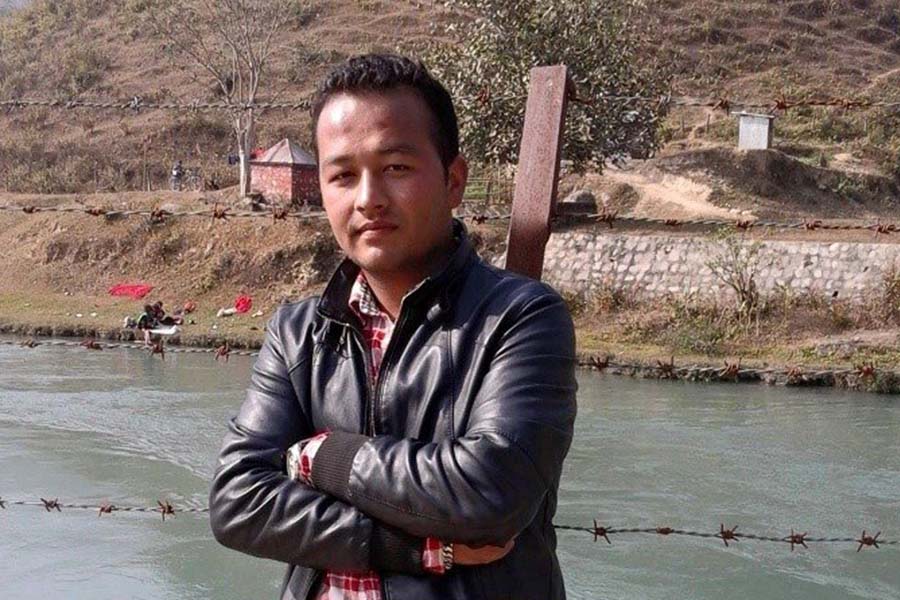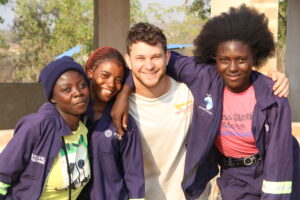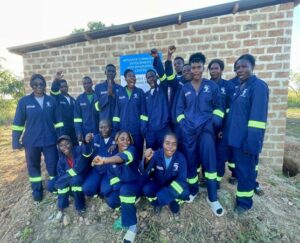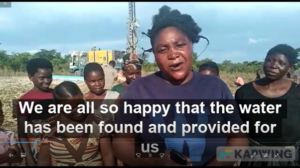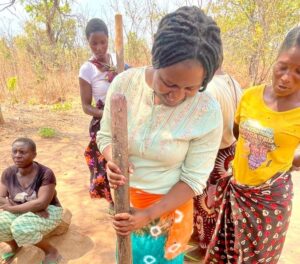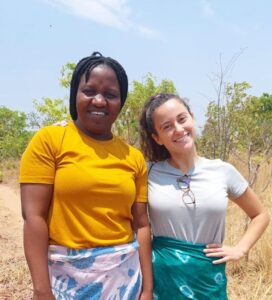by Rabbi Micha Odenheimer
Ever since I met Bijay Thapa, I’ve been busy explaining to Tevel’s Nepali staff what the Yiddish word “nachas” means.
Bijay is a member of our 4th cohort the Tevel Fellowship program, composed of an equal number of Israelis or Diaspora Jews and nationals of the country we are working in. The fellows (except for a few of the Israelis who have finished the army and shown leadership ability) are all recent university graduates. So is Bijay. And that’s where the “nachas” comes in.
Bijay comes from Khotang, a remote region in the Himalayan hills of eastern Nepal. His parents were subsistence farmers, but like many small farmers in Nepal and elsewhere in the “two thirds world”, they did not have enough land or resources to grow enough for even basic food. Bijay’s father was forced to migrate to India, and to work as a day laborer digging coal by hand in a mine. His father had died at six, and he had to drop out of elementary school after 5th grade, but the power of education had made an impression on him. He was determined to give his own children a chance to go to school. There was just one problem: Maoist rebels against the central Nepali government had taken over the area in which they lived; as a result the teachers had fled and the schools were closed.
Bijay was eight when his dad heard that there was work in a stone quarry near the road from Pokhara to Kathmandu, where the Maoists were not in control, and that there was a good community school nearby that accepted children from the quarry. The family moved to the quarry and Bijay quickly learned what a stone quarry was: an encampment on the banks of a river where the landless and often indebted poor, from all over Nepal, pulled boulders from the water and smashed them into smaller and smaller pieces with a hammer. The rubble could then be sold for making concrete. Bijay, his parents and his two brothers lived in a makeshift plastic tent that flooded during the monsoon and was blazing hot in the late spring and summer. Most of the men, as well as many of the women, who worked in the quarry drank while they worked, in order to dull the monotony and the pain caused by hours of repetitive movement, as well as the occasional smashed finger or an eye into which a shard had flown when hammer struck rock.
But the saving grace of educational opportunity was real. There was a community school nearby which Bijay attended–after having woken up before dawn in order to put in two to three hours of work smashing stones before class began. After school, Bijay would again work at the quarry for several hours. Of course, even when he had time, the tent, without electricity or a place to store books, was not an ideal place to study or do homework. But Bijay gave it his best try.
Bijay was put into fifth grade, but he had not attended school for several years already. He failed, to his father’s great disappointment, and had to repeat the fifth grade. But he was determined. The next year, he finished first in his class. His teachers were astounded by his almost unprecedented turnaround; when they heard that he might not be able to go to school the coming year because the family could not pay the modest school fees, they chipped in and paid Bijay’s fees themselves.
When Bijay was 14 or so, Tevel came to the stone quarry and the school, working with women and with children and youth. We often use theatre as a tool for engaging young people in issues, sparking creativity, and building self-confidence and leadership. Bijay auditioned for the theatre group, “I had to play a woman giving birth,” he remembers. He did so with aplomb and was accepted. Bijay fell in love with theatre, and through theatre became involved in Tevel’s youth movement “Hami Yuva” or “We are the Youth”, eventually becoming a guide for younger children. Bijay remembers the Israeli guides from Tevel who helped teach theatre and start the youth movement; Israeli names roll of his tongue like a first grade teacher in Tel Aviv doing roll call: Nitzan, Ayelet, Yonina, Yotam…
Public education ends in Nepal after ten grades. Bijay passed his “School Leaving Exam”, the Nepali equivalent of matriculation exams, with flying colors, but the family had no money to pay for “Plus Two”–the Nepali term for 11th and 12th grades. Luckily, Tevel had a scholarship program for Hami Yuva activists; Tevel paid Bijay’s tuition and Bijay continued in Hami Yuva as leader for the teenaged guides. Bijay’s mother, meanwhile, had become one of Tevel’s women’s group leaders. The women’s groups offered literacy classes, educated about sanitation and health and raised awareness about violence against women, which unfortunately was common in the encampment.
Above the encampment lived an even more marginalized group–the Dunwar Rai. The Dunwar Rai were fishermen, for whom river fish had been the main source of food and income for generations. But because of ecological changes, including the stone quarry, there were no more large fish in the river. Many of the Rai now worked in the stone quarry, but unlike most others there, they had some land, although they had little knowledge of farming and no water except in the rainy season. Tevel brought irrigation, created a model farm to teach farming techniques, and helped the village build bio-gas toilets–the first toilets of any kind in the village.
What Bijay remembers more than anything else is the social transformation in the Rai village. “Before Tevel came, we would avoid walking anywhere near the village, even if it took longer, because they would throw stones at us. We considered them savages. But when they started working with Tevel, everything changed. The villagers gained self-confidence. They stopped being afraid of the outside world. They softened to us. We began to work together.”
After graduating high school, Bijay went to university in Kathmandu, helped by a scholarship from another organization. He also continued working for Tevel–now as a theatre teacher, teasing the creativity out of village youth in Tevel’s new working area, Ramechhap. After graduating university, joining the Tevel Fellowship seemed like a natural progression. Along with 13 other Nepali university graduates and their Israeli and Jewish partners, Bijay will be working for the next seven months in a remote village area with youth much like himself. “I want to be an example, a role model,” he says. “I want to tell the young people in the village that it is possible to overcome every obstacle if you have determination–and the right kind of help.”
So what does “nachas” mean? Rabbi Nachman of Breslav says that we experience nachas when the natural beauty and light of the world carves its way into our heart as something permanent. When I speak with Bijay and see how all the various layers of our work with him have come together to help produce a remarkable, determined, idealistic young man, I have this sense. The work we do takes time, but eventually, it carves itself into our hearts and the hearts of the communities with which we work. To witness how seeds of goodness grow within the fertile soil of human souls, how beneficiaries grow into benefactors, fully independent and empowered, how a child of the poorest of the poor, with “the right kind of help”, can become a leader and an inspiration for all of us–that is for me the definition of nachas for us all.

